After years of study and design, the first step in a massive endeavour by Toronto to keep combined sewer overflows from its Lower Don River, Taylor-Massey Creek and Inner Harbour will be launched this year.
A tender call for tunnel boring of the 10.6-kilometre-long, 6.3-metre-diameter Coxwell Bypass Tunnel closed in January and within a few months the award winner will be announced, with construction starting in the summer.
To be lined with 300-millimetre-thick precast concrete segments and installed in bedrock at a depth of approximately 50 metres, its purpose will be to divert stormwater from emptying into the existing Coxwell Avenue sanitary trunk sewer which currently functions as a combined sewer.
Also included in the project will be five wet weather flow storage chambers that will be excavated from the ground surface down to the elevation of the tunnel.
Ranging in diameter from 20 to 22 metres, they will store excess water that can’t be accommodated in the tunnel in heavy rain falls, says Toronto Water’s general manager, Lou Di Gironimo.
Burying the tunnel and the chambers in the deep bedrock will mitigate risks associated with encountering mixed ground conditions and lessen the need for significant dewatering, he says.
To be launched from the Ashbridges Bay Wastewater Treatment Plant and extending north and east to Coxwell Avenue, the tunnel is scheduled to be completed in 2023.
Once in place, the tunnel can be linked with 12 connection points that will divert combined sewer overflows and stormwater runoff into it. Conventional tunnelling techniques and excavation methods will be used to build the connections, says Di Gironimo.
The estimated cost of the Coxwell Bypass Tunnel is $360 million and it’s only one piece of the much larger plan to improve water quality in the Lower Don watershed through the Don River and Central Waterfront Flow System (DR&CW WWF System) project.
The DR&CW WWF System is one of several projects that will work together
— Lou Di Gironimo
Toronto Water
Although the city has made significant strides in the separation of storm and sewage lines, there are still a number of combined sewers in the watershed where stormwater runoff and sewage are carried in one line, he says.
“Combined sewer systems are designed to have combined sewer overflows discharging, untreated, to local waterways during heavy rainfall to prevent the sewer system from overloading and backing-up. That was the system when they were built,” he states.
As a result, water in the watershed is degraded, he points out.
To be built in stages and estimated to top $2 billion, the DR&CW WWF System will eventually include two more tunnels, Taylor-Massey and Inner Harbour, with a combined distance of 22 kilometres, plus 12 wet weather flow storage shafts, 27 connection points, seven off-line storage tanks and real-time control to regulate sewer system flows.
Timing of the future stages is dependent on funding, regulatory approvals and other considerations, says Di Gironimo.
However, construction will proceed later this year on an integrated pumping station, a new three-kilometre-long outfall and a new UV disinfection wastewater treatment system at the Ashbridges treatment plant to handle flows from the three tunnels, he says.
Although the time horizon for completing the system may be 10 to 15 years, “once fully implemented, it will virtually eliminate combined sewer overflows and stormwater runoff being discharged from existing outfalls into the Lower Don River, the Taylor-Massey Creek and the Inner Harbour.”
In underlining the intensive and detailed nature of the project, Di Gironimo points out it took the consultants (Black & Veatch in association with R.V. Anderson Associates Limited) from 2014 to 2017 to complete the preliminary design for the overall system and the detailed design for the Coxwell Bypass Tunnel. Detailed design is now proceeding for one of the seven offline storage tanks.
The project’s roots go back almost 30 years. In 1987 the International Joint Commission identified Toronto’s waterfront as one of 43 polluted “Areas of Concern” in the Great Lakes Basin, largely because of impaired water quality and sediment conditions in the Don River and the Inner Harbour.
In 2003, Toronto council approved a city-wide Wet Weather Flow Master Plan, which identified a series of projects to improve water quality in all six of its watersheds with the ultimate aim of delisting Toronto as an area of concern.
“It is important to note that the DR&CW WWF System is one of several projects that will work together,” says Di Gironimo.




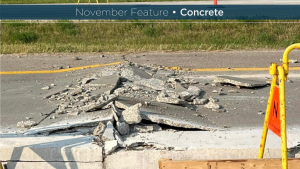
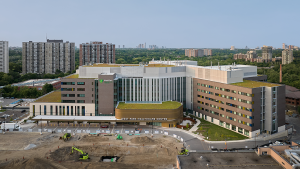
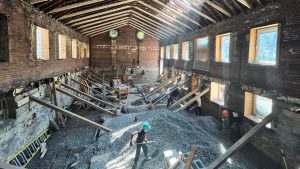
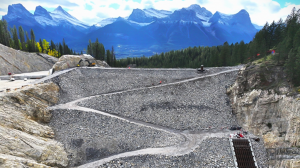
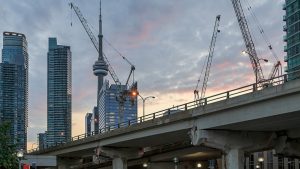

The International Joint Commission has reported on the progress of the Parties (Canada and United States) in its Triennial Assessment of Progress report Nov 2017. In it the IJC is very pointed in stating that Governments must accept that the public can no longer tolerate Combined Sewer Overflows and that Governments must take steps to stop this happening – the most recent example in Toronto being the massive discharge of untreated sewage water in May 2017. Around the Great Lakes there are massive numbers of beach closings, almost entirely the result of CSOs. We called on Governments to establish a time line when such discharges are no longer a fact. (to see the report, go to IJC’s website)
Gordon W. Walker, Chairman Canadian Section International Joint Commission
I would like a very brief conversation with Lou Di Geronimo about a modified ASTM C 494 S cement hydration enhancer for concrete. The ACI testing lab engineer who oversaw testing commented “Enhance PMT admixture is a standalone concrete admixture, not to be compared with any other we have tested” This is the first proven “liquid Pozzolanic solution ever tested”
Design strength achieved @ day 10 to 14 but continuous hydrate production doubled strength @ 160 days. This prolific CSH production is due to the admix pozzolanic reaction with the cement and mix water. No bleed up to 0.53 W/c. This extended hydration consumes the waste hydrate Calcium Hydroxide to reduce high PH leaching as Permeability is reduced after a few days to zero.
The admixture greatly reduces contaminated water ingress increasing resistance to matrix degrading from ground salts, mild acids (organic acid) oils, chemicals etc C666 testing stopped @ 300cycles (zero damage).
There is much more to relate and the ACI engineer who oversaw the ASTM testing designed the concrete for the US nuclear power plant program.
Enhance was originally developed for the down hole oil industry but these last 24 years has been employed in multiple civil project.
Regards.
John Macdonald (Founder)
Enhance ICD (Canada) Inc